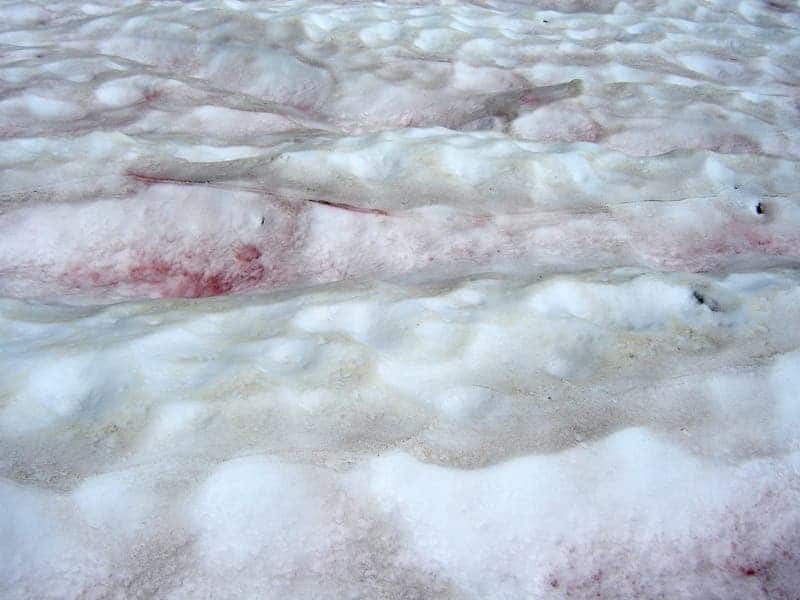You’ve heard of yellow snow, but there is another shade you should fear even more: called pink, red or watermelon snow, researchers warn that this phenomenon is a worrying testament of drastic melting in the Arctic.
Red snow isn’t new. The phenomenon was observed by the first arctic explorers, and it was initially believed to be caused by iron oxides permeating the snow. Since then, however, it has been established that the hue is a product of red algae that bloom in frozen water. A new study published in the journal Nature Communications shows that these blooms are causing the snow to melt faster and they’re only going to grow more rapidly as climate change causes Arctic snow to melt more.
One property of snow is high albedo, meaning it reflects a large proportion of incoming light instead of absorbing it as heat. The study found that over a 100-day period, the algae-rich snow has a 13% lower albedo than white snow. The catch is that while these algae bloom naturally, man-made global warming puts them on a positive feedback loop — higher average temperatures mean more snow is melting each year, providing the water that algae feed on, which in turn cause the snow to melt.
“As we infer from our data, melting is one major driver for snow algal growth,” the study notes. “Extreme melt events like that in 2012, when 97% of the entire Greenland Ice Sheet was affected by surface melting, are likely to re-occur with increasing frequency in the near future as a consequence of global warming. Moreover, such extreme melting events are likely to even further intensify the effect of snow algae on surface albedo, and in turn melting rates.”
That’s because the glacier melt, disproportionately driven by the rise in global temperatures, is effectively watering the red algae, says lead study author Steffi Lutz of the University of Leeds.
“The algae need liquid water in order to bloom,” she said. “Therefore the melting of snow and ice surfaces controls the abundance of the algae. The more melting, the more algae. With temperatures rising globally, the snow algae phenomenon will likely also increase leading to an even higher bio-albedo effect.”
As temperatures continue to rise, the Artic will keep taking on a bloody shade. Maybe it’s allergic to climate change.










